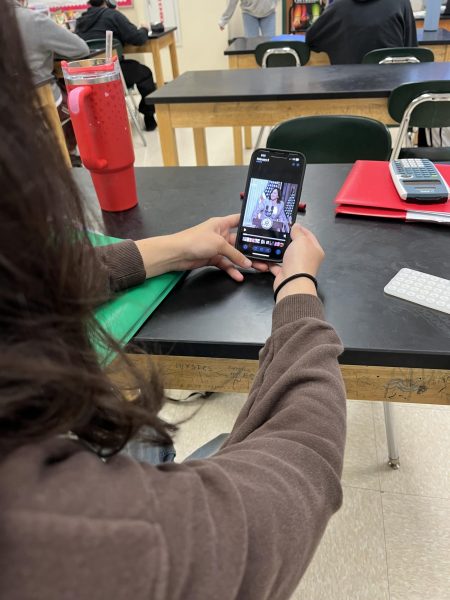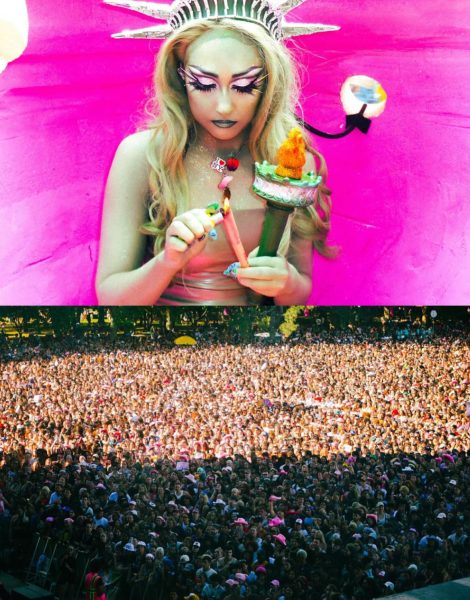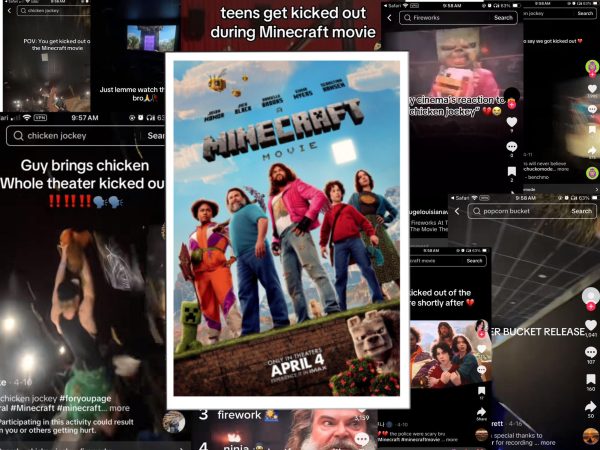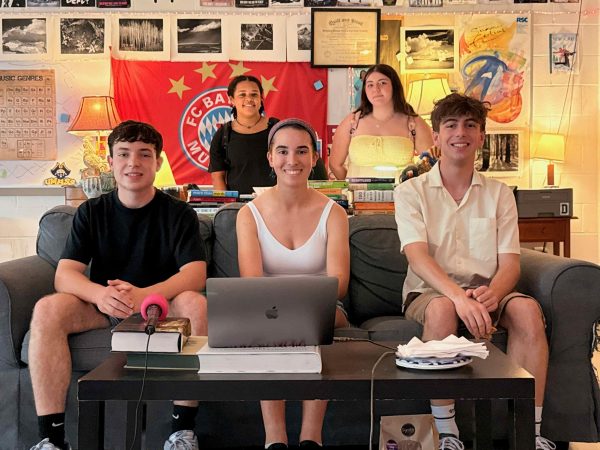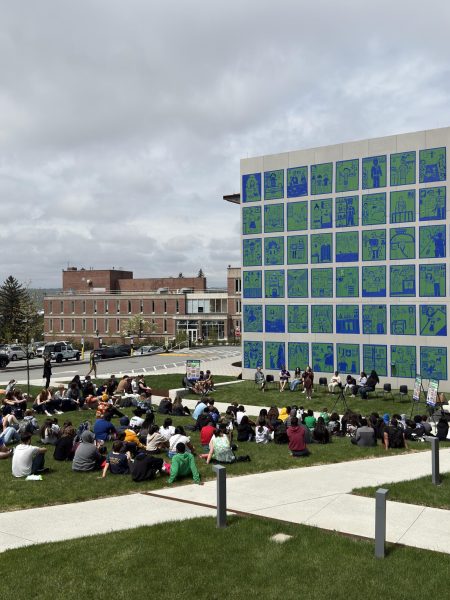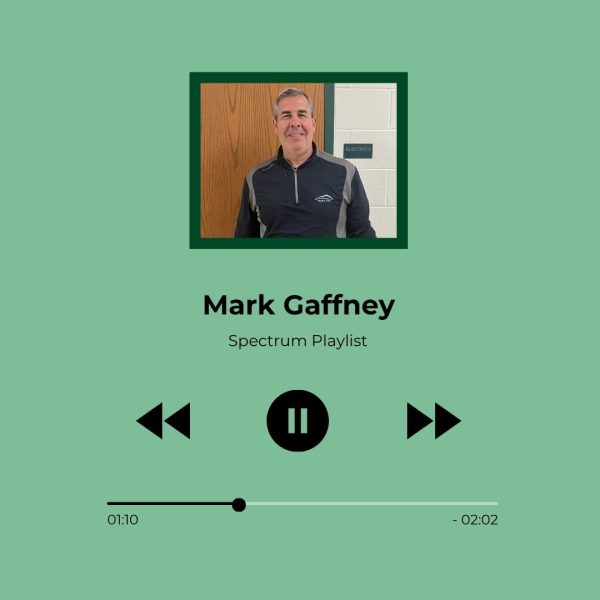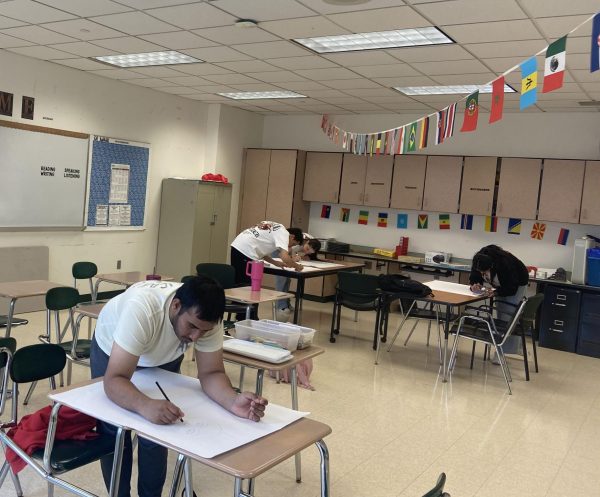Inside the Youth of Iran’s Protests: A Revolution Led by High Schoolers
Schoolgirls without head coverings hold a classroom demonstration against Iranian leadership.
High school girls shuffle into class, gripping school bags and plopping books on their desks. They take out last night’s homework to be checked. They chat with their friends before the bell rings at 7:30. They stare out the windows, where fists are raised and chants are roared just blocks away. A building fury shadows their faces behind the hijabs they are forced to wear, their eyes daggers slicing a portrait in the corner. Ayatollah Ali Khamenei. Iran’s supreme leader.
Thrust into power through the Islamic Iranian revolution, Khamenei has ruled the nation for 33 years. His reign is marked by a strict adherence to Islamic beliefs, especially when it comes to women’s rights. He claims women are more “delicate” humans who must depend on their husbands, scoffing at the concepts of gender and job equality. He is particularly hardlined on traditional modest dress codes. Khamenei declared in a 2012 speech, “Hijab gives women freedom and identity. In spite of the senseless and superficial propaganda campaigns launched by materialistic people, hijab does not shackle women. By ignoring hijab and failing to cover what Allah the Exalted has asked them to cover, women undermine their own dignity and value…Therefore, it is necessary to appreciate hijab and to be thankful to Islam for emphasizing hijab. Hijab is among the blessings of God.”
Khamenei enforces dress codes with Tehran’s Guidance Patrol, more commonly known as the “morality police.” Officially created in the early 1990s, the force uses violence to implement correct dress. Punishments include fines, lashes, beatings, knife attacks, acid attacks, and imprisonment. “The morality police or Guidance Patrol are completely focused on women. And it is an example of how the states will take women’s rights and abuse them,” University of Cambridge professor Roxane Farmanfarmaian told NPR.
Mahsa Amini was a recent victim of the morality police. The 22-year-old was arrested for not wearing her hijab properly. She collapsed in a police detention center and soon fell into a coma after officers beat her. She died later in a Tehran hospital. The police claimed she suffered a heart attack, releasing footage of her collapse to prove themselves and calm Iranians. It only provoked them and motivated them to protest.
Iranian citizens are fed up with the current government. President Ebrahim Raisi ran on an anti-corruption agenda; in office, his primary goal seems to be the safety of the Islamic regime. His 14-month term has brought intense economic and food insecurity to Iran. Possessing views akin to Khamenei, Raisi ordered a stricter hijab mandate in July, but many saw it as “a bid to divert public attention from the nation’s day-to-day hardships,” as the news website Al-Monitor reports.
Professor Farmanfarmaian added, “And in this particular case, where a young woman died as a result of simply not wearing her veil correctly, that was a trigger for the people of Iran who are already feeling a great deal of grievance against the way that the state has been handling their economic futures and their ability to feel a sense of liberty and exercise their rights.”
Protests of the Islamic Republic quickly spread across the country, with solidarity movements building in Europe and North America. They’ve most prominently taken root in the hearts, minds, and classrooms of Iranian schoolchildren, especially women. Schoolgirls yank off their hijabs and charge for Khamenei’s portrait. They rip it off the wall and tear it in half, or turn it over, and scrawl the rallying cries of the protests: “Women. Life. Freedom.” “Death to the dictator.”
A member of the feared Basij paramilitary force, which operates similarly to the morality police, was invited to give a speech in Shriaz; female students chased him off while chanting “Basijis get lost.” Many spill out of school and march into the streets without head coverings, where they face the heightened response of the morality police.
As of October 26, 2022, over 200 people have been killed in the protests, dozens of them teenagers and nine of them children. But the ruthlessness of the police is not enough to stop the growing masses of teen protestors. It seems that nothing can.
The main source of inspiration for young protestors is the Internet. It’s the medium through which Amini’s story spread, as well as the deaths of teenagers Nika Shakarami and Sarina Esmailzadeh at the hands of the morality police. Social media is a resource for teens to locate protests to attend.
“The authorities have tried to crush [the youth protestors] with violence and throttle them by disrupting the internet and blocking popular social media platforms such as Instagram,” New York Times reporter Farnaz Fassihi writes, but “young people like Nika and Sarina at the center of the uprising pose one of the biggest challenges for Iran’s ruling clerics. They are tech savvy, and many are detached from the political and religious ideology that defined the previous generations.”
The world will keep its eyes on Iran as it challenges corrupt leadership and restricted freedoms for women, while displaying a budding phenomenon: the Internet-catalyzed, youth-led revolution.


